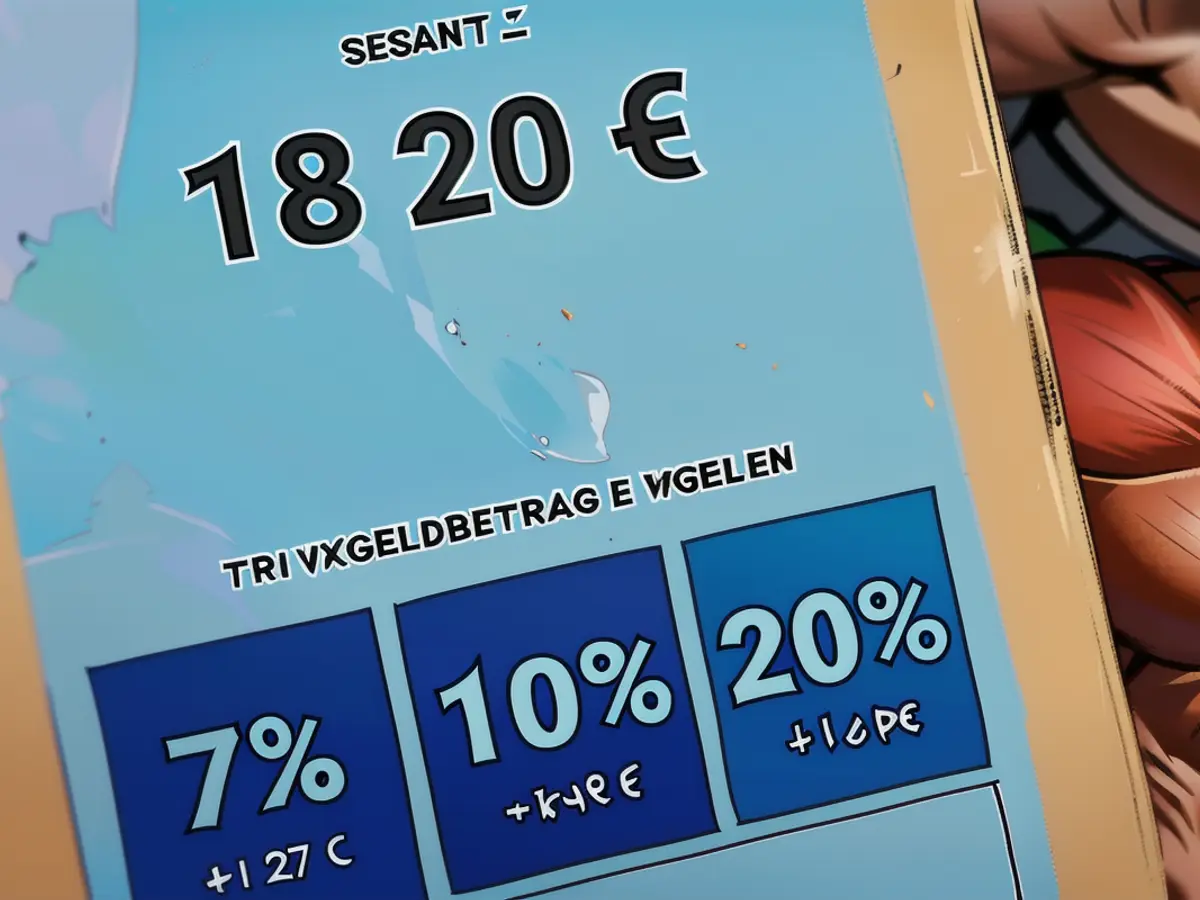You'll be pressured to give larger tips.
Today, the term "trinkgeld" has transformed into a "tip," and it's often processed digitally instead of using cash. However, card terminals can be manipulative, even in places where it wasn't previously common.
Back in the day, German bars used to have a simple "it's fine" or "the rest is for you" response when tipping. But times have changed with the advent of digital payments. In Germany, tipping was mainly aimed at restaurants and services like hair salons, pedicures, or taxi rides. Now, people are expected to leave a tip even in places where it wasn't customary before.
Take, for example, a high-end bakery on Kurfürstendamm in Berlin. The touchscreen display features "7%," "10%," and "20%" as options, but only "Free Input" and "No Tip" are revealed on closer inspection. At a trendy sandwich place in Hamburg, the card terminal communicates in English: "0%," "10%," "15%," "20%," "25%" are the possible tip amounts. 25% seems a bit excessive for a 9.50 euro double cheeseburger, which would cost an extra 2.38 euros.
In the US, employees at many restaurants are paid below the minimum wage and rely on tipping to make up the difference. US researchers attribute the recent trend of higher tip amounts ("tip inflation") to the pandemic. People were more generous at the start of the pandemic to support businesses, which has now become the norm.
But why has Germany's tip culture shifted so drastically? Why are people asked for a tip when it's self-service? It appears that the era of tip jars at the register, which could easily be ignored, has passed.
Profitable for service staff and owners
These days, when customers are more frequently asked to leave a tip via a touchscreen, many feel compelled to give a high amount. Christian Traxler, a behavioral economist from the Berlin Hertie School, refers to this as "nudging." The customer's behavior is guided, even manipulated, he explains.
Traxler states that it's not just communicated that a tip is expected but also that it should fall within an appropriate range. If high programmed values are used (which might be too high for many), customers tend to give higher tips, but the number of people who give tips decreases. A delicate balancing act, as staff wants to nudge customers without irritating them.
Sascha Hoffmann, an economist from Hochschule Fresenius in Hamburg, researches tip amounts and points out that Germany is still a cash-centric country. However, the share of card and smartphone payments is increasing. He noted that tipping less occurs when paying with cards, negatively affecting employees' earnings in the hospitality and service industries, where hourly wages are already low, and employees depend heavily on tips as additional sources of income.
If tipping vanished, these industries could become less attractive, exacerbating the labor shortage in service jobs, particularly hospitality.
The "coder effect" has long troubled customers and employees since calculating a rounded tip in front of service staff and other guests can be stressful. Social norms also play a role, as most people want to be seen as generous.
The supposed assistance of card reading systems in industries where tipping wasn't traditional could be problematic, according to Hoffmann. "The risk is high that customers are enticed into behaviors they don't want due to the suggestion of tip amounts. In essence, they may believe the suggestions are a relief in the decision-making situation, but later regret overtipping."
If, for example, 5%, 10%, and 15% are replaced with 10%, 15%, and 20% as options, the middle-of-the-road effect could influence tip amounts. The decoy effect (coder effect) could also come into play. If a tip amount is intentionally set high, the other options, also seemingly reasonable, might form a deceptive deception.
Most tip issues result from the social norm that discussing money and tip amounts are taboo, especially if one might be seen as thrifty.
Read also:
- Lack of snow also opens up new opportunities for winter tourism
- Abrupt end to e-car subsidies
- The chemical industry has little confidence
- Intersport boss hopes for sales boom through sporting events
In this new tipping culture, even in Germany, you might find yourself pressured to leave a higher tip due to the digital payment systems' suggestion, a phenomenon known as "nudging" according to Christian Traxler. Despite being a cash-centric country, as Sascha Hoffmann points out, tipping less tends to occur when paying with cards, impacting employees' earnings in industries where hourly wages are low and tips are a significant source of income.
Source: www.ntv.de








